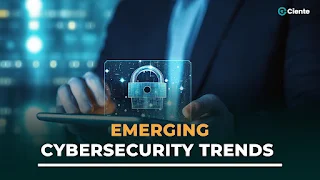2. AI-Powered Cyberattacks and ChatG Phishing Threats
As artificial intelligence (AI) continues to advance, so does its application in cyber attacks. Attackers are expected to leverage AI to conduct more targeted and adaptive attacks. Machine learning algorithms can be employed to analyze massive datasets, enabling cybercriminals to identify vulnerabilities, predict user behavior, and launch more effective phishing campaigns.
3. Supply Chain Vulnerabilities
The interconnected nature of global supply chains provides cybercriminals with multiple entry points to exploit. In 2024, we anticipate an increase in attacks targeting suppliers and third-party vendors. A compromise in the supply chain not only jeopardizes the targeted organization but also has a cascading effect on all interconnected entities, making these attacks potentially more damaging.
4. 5G Network Insecurities
As 5G networks become more prevalent, so does the surface area for potential cyber threats. The increased speed and connectivity of 5G networks brings about new vulnerabilities, including the potential for large-scale disruptions, data interception, and attacks on critical infrastructure. Securing these networks will be paramount to ensuring the stability of our increasingly connected world.
5. Quantum Computing Threats
While quantum computing holds the promise of revolutionizing various industries, it also poses a significant threat to traditional encryption methods. As quantum computers become more powerful, they have the potential to crack widely-used encryption algorithms, compromising the security of sensitive data. Organizations need to stay ahead by adopting quantum-resistant cryptographic techniques.
6. Deepfake Attacks
Deepfake technology has evolved beyond creating realistic but fake videos. In 2024, we anticipate an increase in deepfake attacks on businesses and individuals, ranging from impersonation attempts to the manipulation of audio and video content for malicious purposes. Detecting and mitigating the impact of deepfake attacks will become an essential aspect of cybersecurity.
7. Emergence of IoT Exploits
The Internet of Things (IoT) continues to grow, with an increasing number of devices becoming interconnected. This expanded attack surface provides cybercriminals with more opportunities to exploit vulnerabilities in IoT devices, leading to potential privacy breaches, data manipulation, and even physical harm. Securing IoT infrastructure will be crucial in preventing widespread cyber threats.
8. Social Engineering
Social engineering remains a potent tool for cyber attackers, and in 2024, we expect to see more advanced and targeted social engineering tactics. This includes personalized phishing attacks, influencer impersonations, and leveraging psychological manipulation techniques to deceive individuals into compromising sensitive information. Heightened awareness and education are essential to counter these evolving social engineering tactics.
Effective Ways to Prevent Cyber Threats
1. Multi-Factor Authentication (MFA)
Implement multi-factor authentication wherever possible. MFA adds an extra layer of security by requiring users to provide multiple forms of identification before granting access, making it more challenging for unauthorized individuals to gain entry.
2. Email Authentication
Email authentication is a critical component of a robust cybersecurity strategy, aimed at mitigating the risks associated with phishing, email spoofing, and unauthorized access. Several key protocols contribute to email authentication, collectively reinforcing the integrity and authenticity of email communication:
SPF (Sender Policy Framework) verifies that the originating mail server is authorized to send messages on behalf of a domain.
DKIM (DomainKeys Identified Mail) adds a digital signature to emails, ensuring the integrity of the message and confirming it hasn't been altered in transit.
DMARC (Domain-based Message Authentication, Reporting, and Conformance) builds upon SPF and DKIM, providing a policy framework for domain owners to specify how email from their domain should be authenticated. You can use PowerDMARC’s solutions to configure DMARC easily!
BIMI (Brand Indicators for Message Identification) enhances email authentication by enabling the display of brand logos in the recipient's inbox, offering visual assurance of the sender's legitimacy.
MTA-STS (Mail Transfer Agent Strict Transport Security) enhances email security by enforcing encryption between email servers, reducing the risk of man-in-the-middle attacks. Implementing these authentication protocols collectively fortifies email infrastructure, safeguarding against unauthorized access and ensuring the trustworthiness of digital communication.
3. Endpoint Security
Install an anti-malware software on your operating device to actively detect and filter out malicious files. Make sure you regularly update your antivirus and anti-malware software, so that the latest version can scan your device for vulnerabilities. Endpoint protection helps detect and prevent malicious software from compromising individual devices.
4. Encrypting Sensitive Data
Encrypt your sensitive data while transferring it via email or communicating online, as well as at rest. This adds an additional layer of protection, making it more difficult for unauthorized individuals to access and interpret the information.
5. Vendor and Supply Chain Security
Assess the security practices of third-party vendors and suppliers, especially those within the supply chain. Ensure that they adhere to robust cybersecurity standards to minimize the risk of compromise through these external connections.
6. Monitoring and Analysis
Continuously monitor network traffic, system logs, and other relevant data for signs of unusual or suspicious activity. Implement security information and event management (SIEM) systems that will make monitoring your alerts in real-time more advanced, and facilitate active monitoring of security incidents as and when they happen.
7. Collaboration and Information Sharing
Actively participate in cybersecurity communities and information-sharing platforms. Staying informed about emerging threats and best practices can help organizations stay ahead of potential risks.
8. Regular Security Audits and Assessments
Conduct regular security audits and assessments to identify and address potential vulnerabilities. This includes penetration testing, vulnerability assessments, and reviewing security policies and procedures.

